Where is the oil?
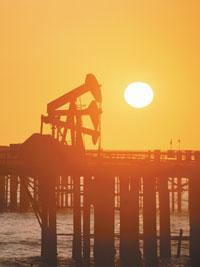
By the early 1970s, the importance of coal was greatly reduced in the field of energy. By then, oil and gas were the main fuels: In 1972, for example, it is estimated that they represent 64.4% of consumption. In addition, consumption was increasing year after year and newly discovered reserves were not enough to supply annual consumption. The situation seemed serious. Was all the oil on Earth finished?
It would not be right to blame what we know today as the oil crisis on the apparent shortage of oil, in which politics and the economy also intervened. On the one hand, the political situation in the countries with the most oil in the world was very unstable. Consequently, the price of crude oil soared in the very short term.
On October 16, 1973, OPEC announced the increase in oil prices from three to five dollars. In December they raised the price to twelve dollars, that is, in three months it multiplied by four. Although the increase is slower, in the coming years the trend has not changed and by the end of 1981 OPEC sells the barrel to 34 dollars. All this, and the facts involved, conditioned the world economy.
Despite the crisis, the source question arose: when will oil run out?
Search or die
Experts have not been able to answer this question, although they have speculated a lot. However, these speculations are important to keep in mind, as they often bring direct predictions. So it happened in 1956 M. With what Dr. King Hubbert did, he estimated that oil production was going to culminate around 1970. And so it was.
From all points of view, the situation around 1970 was serious. Oil was depleting and products were becoming more expensive, companies had to look for new sources of oil. Systematic searches began with rapid results. For example, Britain and Norway began to exploit new oil fields in the North Sea.
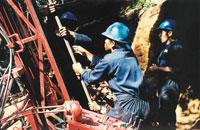
But where and how is oil sought? Keep in mind that the deeper you get out and the closer you get to the poles, the harder the search and extraction is. The difficulty, logically, increases the product.
Logic
Initially the scans were focused on known data. The first deposits were on land, but it was evident that some oil deposits extend below the seabed, progressively developing submarine extraction technology.
On the other hand, knowing the origin of oil can also be important in the search for new deposits. As in the surface there are mountains and valleys, in the subsoil the topography is very complex, practically unknown everywhere. It is not surprising that it is an unknown, since the human being has to overcome the enormous technical barriers to know how the seabed itself is. These barriers to the study of underground topography are even greater.
The subsurface is even less known. The largest basins of large oil accumulation, such as the Arabo-Iranian, have long been exploited. But, of course, the explorations do not seek those basins, but reserves that are not easily found.
In general, oil and gas accumulate in deposits under the earth's crust, but the process is not the same in all of them. The porosity of the geological environment, its formations and many other geological factors can alter the formation of a deposit. In addition, a pit is sometimes composed of oil generated in it, but other times of “migrated” to the area. If there has been migration, oil may also be stored in the place of origin, so continuing to reverse the migration path can be an effective method of exploration.
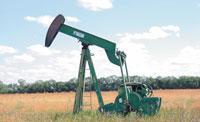
But how do you know if the oil extracted from a well is of local origin? Experts use different chemical signals to illuminate it. In short, the migration process produces chemical transformations in the composition of oil.
Also, when migration has a vertical path, conditions change dramatically, both pressure and temperature. These conditions cause large molecules to fragment. Chemists, seeing what is the molecule that has been formed and what is not, can investigate the 'history' and perhaps the course of this oil. For example, a hydrocarbon that appears in very small amounts, benzocarbazole, may indicate whether migration has occurred, by concentrating and shaping the molecule. Some experts also dare to predict how many kilometers you have migrated from these parameters.
Exploration
But that is theory. Even from the information of a known moat, in practice, it is not easy to find graves or detect the migration pathways of oil. To do this, experts have used all possible techniques. However, in general, there are three predominant techniques in these studies.
The first technique is to make a precise map of the earth's surface. Sometimes these maps can extrapolate underground formations and structures, and once underground topography is known, you can decide where to look in the pit. Along with this study, they often measure concentrations of natural gas, as atmospheric gas may indicate the presence of oil.
However, the geological environment of many oil deposits is not predictable from the topography of the earth's surface, so in many cases this method is ineffective.
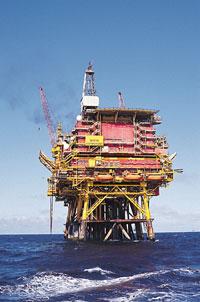
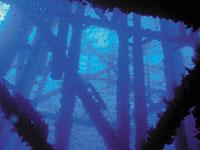
The second method aims to directly analyze the underground structure. To do this, oil companies use seismic waves, as well as sonar in the water. The reflection of the wave caused by a small explosion is received by microphones located in different orientations. From this reflection you can complete the map of underground geology.
Finally, gravity studies are also used to look for oil. Gravity hardly varies on the terrestrial surface, much less if the territory studied is not very wide. Therefore, they require very precise measurements to know the density of underground materials. From these densities you can predict where the stone, oil, gas, etc. are.
The aim of all these techniques is ultimately to guess underground geological formations, a difficult task. The first deposits that were exploited are found in the simplest structures, that is, trapped in vaulted formations. However, the new deposits they now want to find are found in very complex structures, making them difficult to find and extract costly. In the North Sea, for example, only one in three polls is productive.
Perforated
It is clear that you are not sure that there is oil or not in one place until the surface is pierced and the own is analyzed. In addition, virtually all oil search processes require drilling, for example, the explosion to produce seismic waves is done through a small hole, and even when you want to analyze gas or oil, taking the sample requires a hole. As could not be otherwise, when a new oil field is found, it is necessary to make wells to proceed with its extraction.
The industry has spent a lot of time and money developing drilling techniques. During any survey or well, technicians cannot know in advance the type of rock they work with. However, sludge is added to the drill for both lubrication and the addition of necessary substances
The drilling process is always responsible for the ecological impact because, first of all, the new hole releases a series of underground substances and, secondly, the dispersion in the middle of the sludge to be injected constantly. This sludge can be of two types, depending on its main component, i.e. with oil or water mainly. Drilling techniques vary greatly from one type to another.
When is one or another type of sludge used? Oil companies have tended over time to use aqueous sludge because they are cleaner and therefore less polluting. However, in some cases, oily sludge is necessary, for example, when the hard rock has to be drilled, the drill itself asks to slide with oil. The main components of this oil are, in general, diesel and light hydrocarbons.
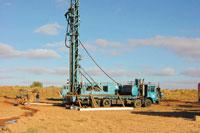
The mud itself needs many additives to make drilling effective. In fact, the list of substances involved is very long and contains all kinds of molecules. Among other things, the mud injected into the drill contains lubricants, which are often the most environmentally hazardous additives.
On the other hand, substances extracted from the subsoil should also be considered. The deeper the drilling, the more dirt comes to the surface. In general, as it deepens, the outcrop of solid and liquid materials decreases progressively. This liquid is aqueous, but as it is drilled, it has increasing amounts of suspended hydrocarbons. This wastewater that is extracted requires a purification prior to pouring, which increases the process and even more so on a marine platform.
When oil starts to come out, a fine oil-coated sand is normally extracted. This sand is also one of the main sources of pollutants. However, in this process many other products are extracted, including heavy metals and radioactive isotopes. Therefore, environmental groups have launched numerous campaigns against the dumping of these materials.
Oil companies have to spend a lot of money to clean up waste and clean up water, and spending is much higher when deposits are at sea or near the poles. And remember that most new reservations are in those places. Therefore, in addition to the shortage of oil, the technology needed to locate and extract it also makes the product more expensive.
Price Authority
Then, once again, the same question: How many barrels of oil are buried? It cannot be said exactly. Maybe we never know. According to experts, production reduction will begin in 2005. According to this calculation, reserves will run out around 2050. However, as oil gets older, society will have to start exploiting other energy sources.
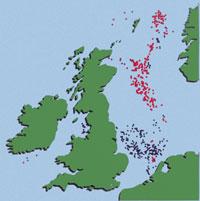
Oil companies know this, so they have launched research departments on renewable energy. However, the search for new oil fields will take years to complete, and in that search companies and governments face environmental agreements.
An example of this is the exploration of the Arctic, in Alaska, which has had to be authorized by the United States government, is actually a protected area.
Trying to give way to oil
From an environmental point of view, oil extraction has generated numerous debates, especially regarding maritime installations. In the 1970s the exploitation of submarine deposits was promoted, for which hundreds of platforms were installed throughout the world (currently there are 635 in the seas worldwide). Many of them were installed to make the lifespan of these platforms about twenty years. After this period, these deposits were not exhausted, much less, and the debate arose that the facilities were to be dismantled.
Disassembly work varies greatly depending on the type of platform. If the seabed they exploit is not very deep, the platforms have legs that reach the bottom. However, in cases where the bottom is 150-200 meters, floating platforms anchored by anchors and attached to large cement blocks are used. Dismantling these platforms, as with the legs, does not pose problems. In addition, the entire platform can often be freed and transported from one pit to another to lower the cost. Sometimes platforms are replaced by boats to make wells.
From the environmental point of view, the ecological impact of the activity of the platforms is much lower than that caused by the ships. However, pour oil, waste water and other products into the sea. On the other hand, platform accidents have not been exceptional in the oil industry. These spills are also reflected in marine biology, with declines of populations of different species occurring around the platforms.
Coral on the legs
But the relationship between oil platforms and biology is not at all a simple matter. For example, in 1997 some Scottish oceanographers found a very special case. On the legs of some platforms that were about to be dismantled, in the North Sea, the colonies of the Choir Lophelia Pertusa were detected. It is a coral of cold water, but it does not appear in the North Sea, since its bottom is sand, so the colonies do not have support to grow. However, the legs of the platforms are very resistant.
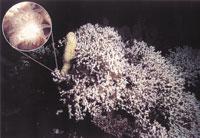
Then a strange debate arose. The environmentalists demanded that the oil industry not dismantle the platforms. Finally, through an agreement, instead of dismantling altogether, they left the legs of various platforms there.
Did the environmentalists act correctly in this case? The platforms brought a species that does not grow in the area. However, this story has another reading: a species of supposedly sensitive coral has had the capacity to grow for twenty years in an area where continuous spills occur.
This case is a sign of ignorance about marine biology, isn't it?
The oil hole
There is no indication of how oil extraction itself affects the environment. Oil has remained buried for millions of years and now man is constantly coming out. What consequences will it have? Ecology has studied the hydrosphere, biosphere, atmosphere, ozone and lithosphere.
But is it possible to analyze the “oliosphere”? How can the absence of oil affect? For example, have local geological variables (pressure and temperature mainly) been modified in the places where the extraction was performed? Has the existence of surface gaps had consequences? Is it worth analyzing the incidents of composition in these media?
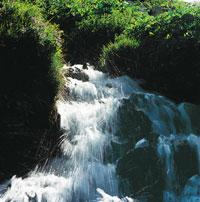
You cannot know whether or not it has effects and, in any case, it is immediate. Although oil was a very small proportion of the earth's surface, it was concentrated in different places, as 37 gigantic oil zones are known in the world, of which 26 are found in the Arab-Iranian basin. However, despite its safety, in the general carbon cycle there is a certain interruption in which living beings intervene.
If hydrocarbons are of fossil origin, depletion of reserves can cause problems. Will ecology ever address this type of analysis?
Buletina
Bidali zure helbide elektronikoa eta jaso asteroko buletina zure sarrera-ontzian










